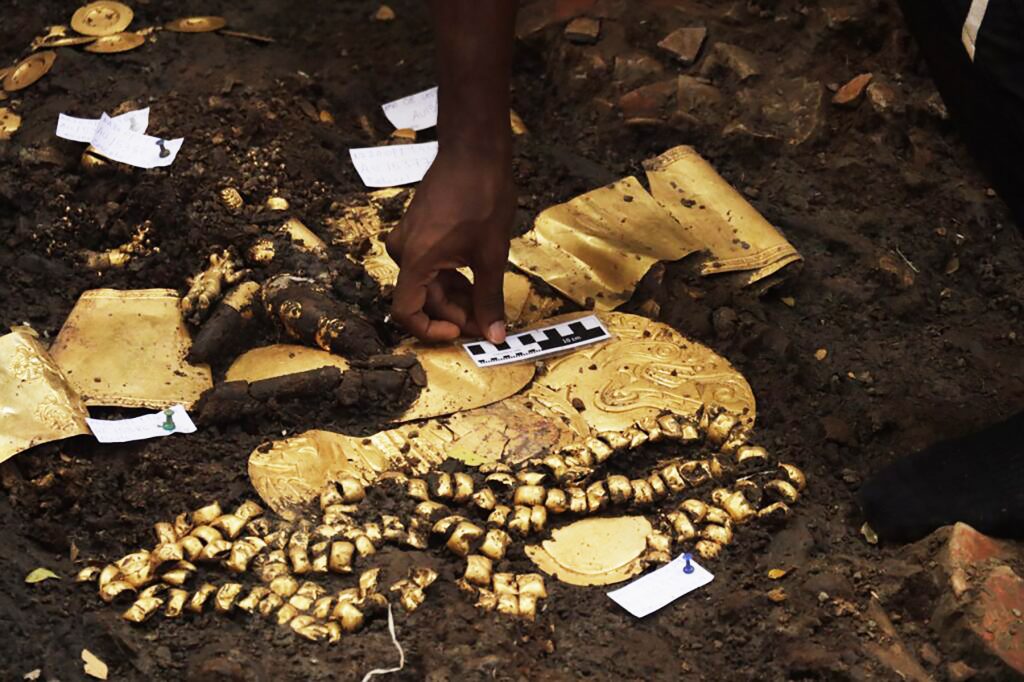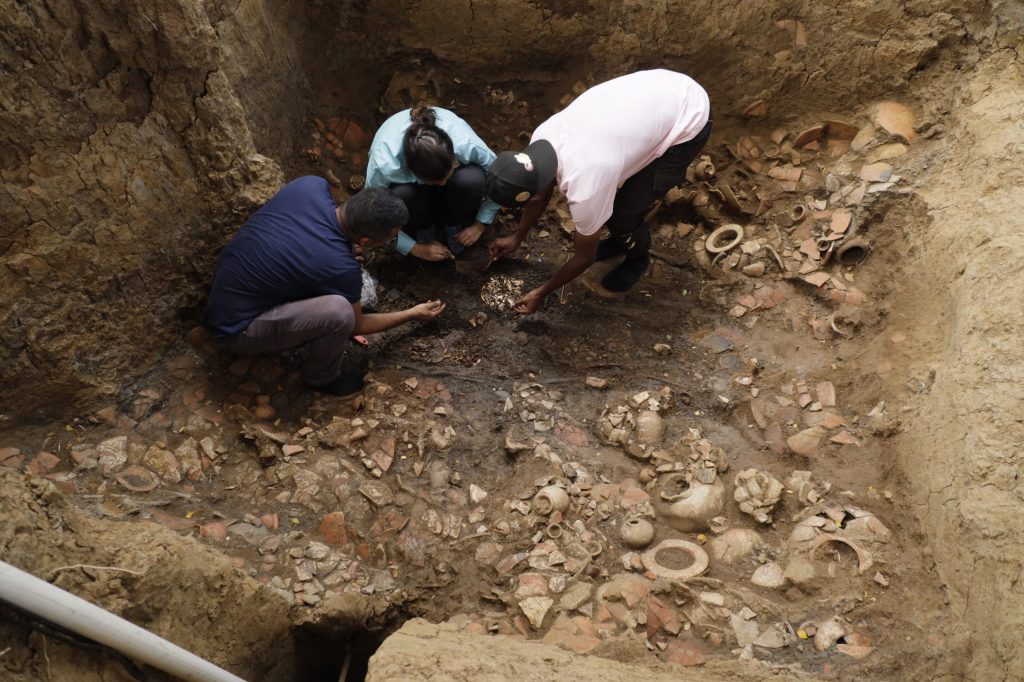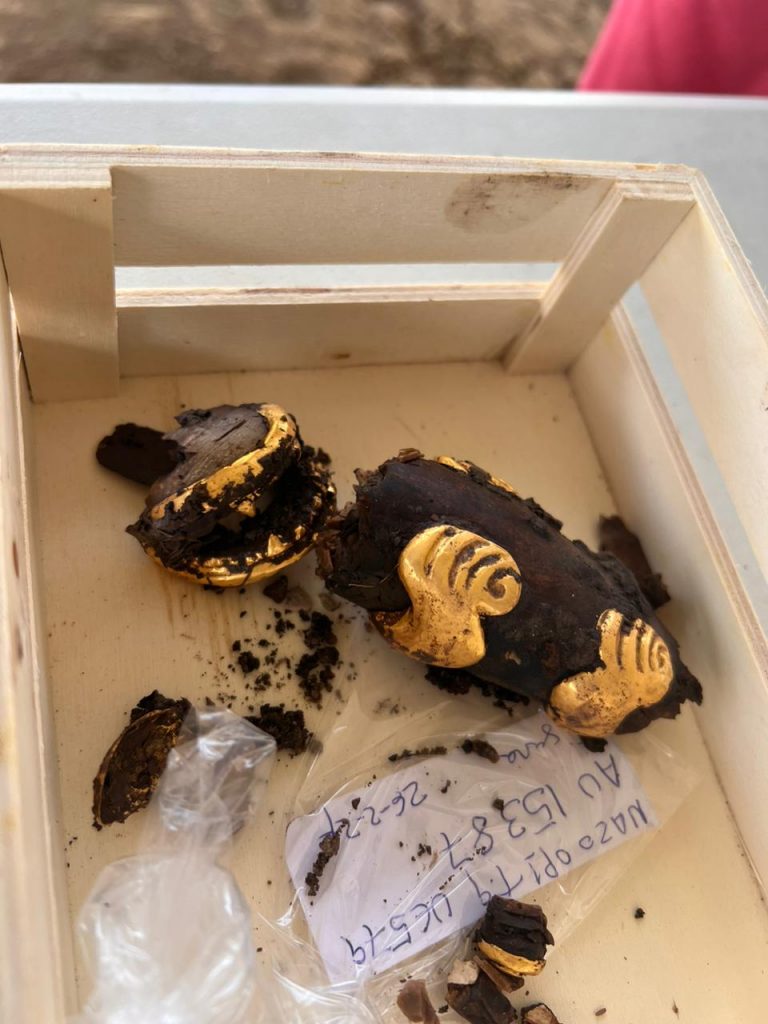Archaeology & History
This Tomb in Panama Contains a Gold Trove of ‘Incalculable’ Value
The artifact is part of the area’s richest burial trove discovered to date.

The tomb of a distinguished Coclé lord from the pre-Hispanic era has been uncovered at the El Caño Archaeological Park in Panama. It is the area’s richest burial trove discovered to date.
Linette Montenegro, the National Director of Heritage at the Ministry of Culture, revealed that excavations at the burial site, known as Tomb No. 9, yielded an exceptionally extravagant gold funerary trousseau of immense monetary and cultural significance.
The trove includes five breastplates, as well as jewelry ranging from belts adorned with golden beads, to gold-plated earrings crafted from sperm whale teeth. Skirts made with dog teeth and a collection of bone flutes were also found, alongside hundreds of beautifully preserved ceramics. The artifacts, reads a statement from the Ministry of Culture, are “not only of economic value, but also incalculable historical and cultural value.”

Ceramic shards were found in the grave. Photo: Ministry of Culture of Panama
Coclé lords were revered figures within Panama’s ancient Coclé civilization, which flourished from 700 to 1000 C.E. From their prominent positions, they wielded authority over political, economic, religious, and social affairs of their societies. The Coclé civilization was known for its sophisticated culture, characterized by skilled craftsmanship, elaborate ceremonial practices, and complex social structures.
Artifacts discovered in Cocle sites often display exquisite artistry, intricate designs, and rich symbolism. Expertly crafted gold effigies represent a substantial portion of relics discovered in the Coclé region.

Gold artifacts excavated from the tomb. Photo: Ministry of Culture of Panama.
Julia Mayo, the director of the El Caño Foundation, suggested that this opulent collection likely belonged to an adult male, approximately 30 or 40 years old, living at the apex of his society. Archaeologists have named the mysterious man the Lord of the Flutes. Mayo indicated that the tomb, dating back to around 750 C.E., not only belonged to a great lord but also housed individuals who perished, or were sacrificed, to accompany him in the afterlife.
As of yet, the full tally of bodies buried in the grave is unknown as the excavation remains underway.
El Caño served as a necropolis around 700 C.E. until it was abandoned circa 1000 C.E. The city of the dead featured monoliths, a cemetery, and a ceremonial area. Mayo highlighted the unique nature of these burials, which saw up to 232 people interred in the same tomb alongside high-status individuals.





